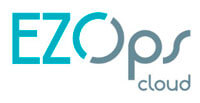In the dynamic landscape of software development, version control and continuous integration are indispensable elements for maintaining code quality and streamlining the development process. GitHub, a leading platform for version control and collaboration, offers a robust solution in the form of GitHub Pipeline. This powerful feature enhances the development workflow by automating various stages of the software delivery process. In this article, we’ll explore the key features of GitHub Pipeline and illustrate their significance through relevant examples.
Automated Build and Deployment
One of the primary features of GitHub Pipeline is its ability to automate the build and deployment processes. This ensures that developers can focus on writing code while the platform seamlessly handles the compilation and deployment tasks. For instance, imagine a scenario where a development team is working on a web application. With GitHub Pipeline, they can configure automated builds and deployments, reducing the chances of errors and ensuring consistent releases. This not only saves time but also enhances the overall reliability of the software.
Parallel and Sequential Execution
GitHub Pipeline allows for the execution of jobs in parallel or sequentially, providing flexibility in defining the workflow. This feature proves invaluable when dealing with complex projects with multiple dependencies. For example, consider a project that consists of both frontend and backend components. GitHub Pipeline enables developers to define parallel jobs for building and testing each component simultaneously, expediting the overall development process.
Conditional Execution
Conditional execution is a powerful aspect of GitHub Pipeline that allows developers to define specific conditions for job execution. This feature ensures that certain tasks are performed only when predefined conditions are met. To illustrate, suppose a project requires different deployment strategies for staging and production environments. GitHub Pipeline can be configured to deploy to the staging environment automatically upon code merge, with the production deployment triggered only when a specific tag is applied, ensuring a controlled release process.
Integration with Third-Party Tools
GitHub Pipeline seamlessly integrates with a wide array of third-party tools, extending its capabilities beyond version control and build processes. This integration facilitates the incorporation of code analysis tools, testing frameworks, and deployment platforms into the workflow. As an example, consider a scenario where a development team employs a code quality analysis tool. GitHub Pipeline can be configured to run this analysis automatically after each code push, ensuring that the team adheres to coding standards and best practices consistently.
Customizable Environments and Workflows
GitHub Pipeline allows developers to define custom environments and workflows tailored to the specific needs of their projects. This level of customization is essential for accommodating diverse development scenarios. For instance, a project might require different testing environments for various branches or feature branches. GitHub Pipeline enables developers to configure distinct workflows and environments based on these requirements, ensuring that each code change undergoes the necessary testing and validation.
In conclusion, GitHub Pipeline stands as a pivotal feature in the realm of software development, providing a streamlined and automated approach to version control, build processes, and deployment workflows. By exploring its key features and accompanying examples, developers can harness the full potential of GitHub Pipeline, elevating their efficiency and ensuring the delivery of high-quality software products.
